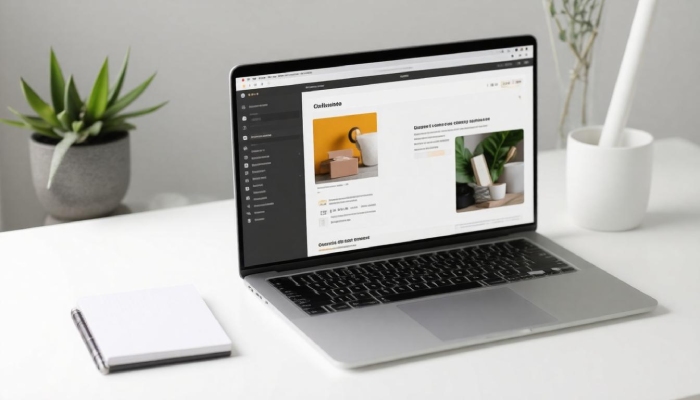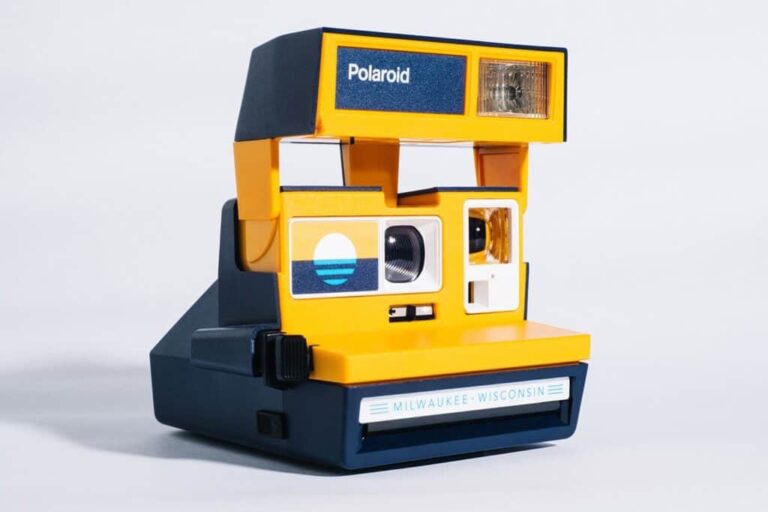Blogger Outreach Email Examples: Effective Templates for Success
In the crowded world of online content, reaching out to bloggers can feel like shouting into a void. Yet, with the right approach, your message can cut through the noise and spark meaningful conversations. Think about it: influencers receive countless emails each day, so how can you make yours stand out? Whether your goal is to collaborate with them or get a product reviewed, effective outreach hinges on crafting messages that resonate.
In this article, we’ll explore practical email templates and strategies that put personalization and genuine engagement at the forefront—just what you need to transform cold pitches into warm connections.
Effective blogger outreach email examples include a “General Collaboration Email,” which invites influencers to collaborate focusing on deliverables, and a “Product Review Request Email,” where you ask influencers to review your products tailored to their interests. Using these templates can significantly enhance your chances of building fruitful relationships with influential bloggers.
Effective Blogger Outreach Emails

A successful blogger outreach email starts with personalization, which is not merely about addressing the reader by their name. It’s about establishing a connection, requiring effort. For instance, when you craft an opening line like “Hi Sarah,” instead of the generic “Dear Blogger,” you’re not just adding a name to your greeting. You’re indicating that you care enough to know who they are, making your email feel less like a mass pitch and more like a tailored invitation.
The significance of personalization doesn’t stop there. Think about how you might address their recent work or interests. Highlighting specifics from their blog or social media shows that you are engaged with what they create. This attention to detail reflects your sincerity and respect for their time and creativity.
Yet, without depth in your content, that initial connection can quickly fizzle out if not supported by knowledge and genuine interest.
Research-Driven Content
This leads us directly to the importance of research-driven content. Imagine receiving an email that acknowledges your recent blog post; it feels rewarding, doesn’t it? For example, mentioning, “I loved your recent article on sustainable fashion” does more than flatter—it demonstrates that you’ve invested effort into understanding their niche and perspective. This kind of insight enhances the relevance of your outreach, making them more likely to engage.
When drafting your email, consider referencing specific points that resonated with you or a unique angle they presented. Perhaps they shared insights on eco-friendly materials; acknowledging this creates a conversational tone that is inviting. Utilize phrases like, “Your discussion on eco-conscious brands opened my eyes to…” This not only shows you’ve done your homework but also sets the stage for meaningful dialogue.
Beyond customization and research lies another element: clarity in your call to action (CTA).
Clear Calls to Action (CTA)
A clear call to action is essential in driving responses effectively. After establishing a personal connection and demonstrating thorough research, lead them toward what you want from them without being pushy.
You might end your email with a straightforward request—whether it’s for collaboration or feedback on an idea. Expressions like “Would you be interested in partnering for an upcoming campaign?” leave little room for confusion about your intentions.
Moreover, brevity matters here too; keep your asks concise yet compelling. If they feel overwhelmed by lengthy emails stuffed with requests, they may lose interest before reaching your primary objective.
Finally, building relationships through interactions is crucial in maintaining long-term connections.
Fostering Relationships
Nurturing these connections doesn’t stop once the first email goes out—engagement should be ongoing. Make it a habit to interact on social media platforms before sending out formal requests; comment on their posts or share their work with insightful notes. This establishes rapport and makes subsequent outreach feel less transactional.
Engaging with influencers effectively means you’re not just seeking followers but appreciating them as valuable contributors in the space—a philosophy that earns trust and opens doors for mutual collaborations in the future.
With thoughtful personalization, comprehensive research, clear actions, and continuous relationship-building practices in mind, you’ll find yourself crafting outreach emails that stand out—not just increasing open rates but fostering genuine collaborations along the way.
Having explored these integral components of outreach emails, we now turn our attention to how to shape those insights into messages that resonate and captivate.
Crafting a Compelling Message

The heart of your outreach email lies within the message you create. It’s not enough to merely state your intentions; you need to weave a narrative that resonates with the person on the other end. Imagine receiving an email that speaks directly to your interests and values—that’s precisely what you want to achieve. The key is in understanding their perspective and crafting every sentence with thoughtfulness and purpose.
Key Components
- Clear Subject Line: Start with a short yet intriguing subject line. It should invoke curiosity or offer clarity about the email’s content. For instance, instead of just saying “Collaboration,” try “Collaboration Opportunity: Eco-Friendly Fashion” to catch attention without being misleading.
- Hook in the Opening Sentence: Your first sentence should act as a hook that reels them in. For example, “Did you know that 75% of readers prefer eco-friendly brands?” This statistic serves two purposes: it grabs attention and demonstrates that you understand their audience, creating an immediate connection.
- Value Proposition: Here, articulate precisely what’s in it for them. Phrasing such as “Partnering with us could bring your blog to over 10,000 new eco-conscious readers” showcases tangible benefits, making your proposal hard to ignore. Offering something unique can significantly elevate your pitch.
- Call to Action: Conclude with a clear call to action that encourages a specific response, such as “Interested in discussing further? Let’s set up a quick call this week.” This invites interaction while being respectful of their time.
By ensuring each component of your message is strategic and thoughtfully crafted, you’re more likely to engage effectively with potential collaborators.
It’s also vital to personalize each email beyond just inserting a name; this fosters genuine relationships rather than treating influencers as mere contact points. Take time to learn about their work or share common ground—maybe they recently covered a topic relevant to your brand. Personal details can make all the difference in establishing rapport.
However, brevity is crucial too; we live in an age where attention spans are fleeting. Keeping outreach emails concise ensures that essential information isn’t lost in long paragraphs. Limiting length not only respects the recipient’s time but also enhances clarity, increasing chances they’ll read through and respond.
In addition, timing plays a critical role when it comes to follow-ups. If you don’t hear back within a few days, sending a gentle reminder can keep you top-of-mind without coming off as pushy.
As you refine your messaging strategy based on these components, consider how applying these principles can solidify your approach; effective templates await that can help streamline the creation of compelling outreach emails.
Sample Promotion Email Template

A well-structured promotion email is fundamental for successfully engaging with potential collaborators. The goal is to create something that feels genuine while still being professional. The email should be versatile enough to adapt to various contexts but specific enough to speak directly to the recipient’s interests. It’s almost like preparing an exquisite dish; you need the right blend of ingredients to make it appealing.
Template Breakdown
Imagine the thrill of connecting with someone whose blog you admire! Now, as you get ready to write your own email, let’s break it down so that it doesn’t feel like jumping into cold water without knowing how deep it is.
Subject: Collaborate on Promoting [Your Product/Service]?
This subject line is concise yet enticing. It specifically mentions collaboration, which conveys cooperation rather than a hard sell, making it more likely the blogger will open your email.
Now onto the greeting—never underestimate its importance!
Hi [Blogger’s First Name],
Starting with a friendly yet professional salutation sets a warm tone for the email.
Next, we want to introduce ourselves succinctly:
My name is [Your Name], and I am a [Your Title] at [Your Company].
Here, you’re establishing your identity while linking yourself to your brand, which adds credibility right off the bat.
To capture their interest, refer directly to their previous work:
I recently came across your blog and was impressed by your article on [Related Topic].
By doing this, you show that you’ve taken the time to engage with their content, creating rapport and establishing common ground.
Further, moving into your proposal:
Given your interest in [Related Topic], I wanted to see if you’d be interested in collaborating on promoting [Your Product/Service].
Here lies an essential aspect—specificity. Make sure that promotion is relevant; this way, it feels like a natural extension of their current content rather than an abrupt pitch.
Let’s talk about what you’re offering:
[Your Product/Service] offers [Brief Description], and we believe it aligns perfectly with your content.
Value Proposition: Highlight what makes your product unique or beneficial for their audience. Influencers want to know that what you’re offering resonates with them too.
Lastly, include an actionable commitment:
We’d love to provide you with a free sample or discuss possible collaboration opportunities.
This not only invites dialogue but presents an opportunity for them to experience what you have to offer first-hand.
Remember, closing statements matter as well. Always wrap up politely and express enthusiasm for further conversation. Here’s how:
Best,
With this template in hand, you’re now prepared to draft a promotion email that stands out among hundreds of others—and interests effective influencers in collaborating with your brand. As we continue exploring strategic outreach, let’s transition into crafting compelling invitations tailored specifically for guest contributors.
Guest Blogging Outreach Example

When reaching out for guest blogging opportunities, the essence lies in presenting value. This means not just pitching your ideas but framing them to highlight how they will benefit both the blogger and their readers.
An effective email template—especially when powered by tools like Nureply—serves as a useful starting point, but personalization is crucial. Each message should feel specifically crafted for the recipient, showcasing genuine interest in their work.
Consider this: You’re proposing a partnership that can enrich their content library. The first thing to remember is to grab their attention right from the subject line, which should be intriguing enough to warrant an open yet straightforward enough to convey the email’s purpose. For example, instead of a generic “Guest Post Request,” opt for something like “Potential Guest Post on [Interesting Topic].” This sets the tone for cooperation rather than mere solicitation.
As you begin crafting your email body, make sure you effectively introduce yourself and establish credibility.
Starting with a friendly greeting like “Hello [Blogger’s First Name],” sets a warm tone. Follow this by introducing yourself and your blog or affiliation, and mention what drew you to their blog specifically—was it their engaging style, or perhaps a piece they wrote that resonated with you? This humanizes the communication and shows that you’ve taken the time to understand their platform.
When suggesting topics, ensure they are closely aligned with the audience’s interests while highlighting your expertise on those subjects. The topics could be variations of how-to guides, research insights, or even personal stories related to the niche.
In your proposal, include two to three topic ideas. Phrase your suggestions as exciting possibilities rather than rigid mandates. For instance, stating “I’d love to explore X” is far more engaging than simply “I can write about X.” By inviting collaboration, you cultivate an inclusive atmosphere where the blogger feels their input is valued.
Once you’ve established rapport and presented compelling ideas, encourage further engagement without pressure.
Conclude your email by extending an invitation for discussion; offer to draft an outline or a full draft based on their preferences. It’s essential that they feel no obligation—simply express your willingness to adapt to their needs. Ending with appreciation and optimism solidifies a positive impression and leaves room for future interactions.
Make sure to include your signature at the end with contact information—this makes it easy for them to reach back out. A well-crafted outreach email can set the foundation for fruitful collaborations in guest blogging. With thoughtful personalization and a clear outline of mutual benefits, you’ll find yourself forging valuable relationships within the blogging community.
With these examples in mind, let’s now focus on what truly makes outreach emails stand out in a crowded inbox.
Key Elements of Successful Emails

When crafting outreach emails, several essential components can dramatically impact your chances of success. The cornerstone of an effective email is personalization. This isn’t just a matter of tossing the recipient’s name at the beginning; it involves engaging with their work on a deeper level.
For instance, reflecting on specific articles they’ve written or acknowledging their unique style can build rapport and demonstrate that you’ve taken the time to know them. Personalized outreach sends a clear message: you value their contributions and aren’t simply sending out mass emails.
Moving from personalization, we come to clarity, which is equally vital in your communications.
A successful outreach email should be crystal clear about your intention. Are you seeking collaboration, feedback, or exposure for a new product? Make your request obvious while also articulating how it benefits them directly. Instead of using vague terms that can confuse, be straightforward about what you want and why they should care.
For example, if you’re proposing a partnership, briefly outline what you’ll bring to the table and how it aligns with their values or objectives. When recipients see exactly what’s in it for them, they’re more likely to respond positively.
Next on our list is relevance, which ties closely back to both personalization and clarity.
Your proposal must resonate with both the influencer’s current content and their audience’s interests. If you’ve studied the blogger’s niche thoroughly, you’ll know what projects excite them and which collaborations would be most welcome.
If you reference an ongoing series they have or pitch an idea that aligns seamlessly with their recent topics, you are far more likely to capture their attention. This relevance emphasizes the importance of preparation—knowing who you’re reaching out to isn’t just a nice-to-have; it’s a strategic advantage.
Then there’s the overall tone of your email, which holds immense power in convincing someone to engage.
Using a respectful tone is paramount because influencers receive countless outreach requests each day. When you communicate admiration for their work and express genuine interest in collaborating rather than viewing them as just another contact, you create a connection that feels authentic. It’s not enough to just ask for something; framing your request within respect cultivates goodwill. A polite approach ensures they feel valued, increasing your chances of eliciting a supportive response.
Mastering these key elements will significantly enhance your outreach efforts.
Each component—personalization, clarity, relevance, and respectful tone—comes together to form a compelling narrative within your email that resonates with its recipient. By embedding these strategies into your outreach process, you’ll improve open rates and foster genuine relationships with influencers in your niche.
As we transition to addressing potential pitfalls in this process, it’s crucial to be aware of common errors that can hinder effective communication.
Avoiding Common Mistakes

One of the significant pitfalls many encounter in blogger outreach is the tendency to be too generic. Imagine receiving a message that appears to be a cookie-cutter email, complete with typos and impersonal greetings. As an influencer, it feels dismissive, as if you aren’t valued or regarded as an individual.
In fact, studies have shown that 70% of outreach emails are ignored due to generic subject lines alone. This means that specifying names and doing a little research can make your email stand out and feel more genuine. By addressing bloggers by their first name and including references to their work or interests, you show that you have taken time out to understand their unique voice.
Mistake #1 – Being Too Generic
For instance, if you’re reaching out to a lifestyle blogger who previously shared recipes, referencing their last post about a dinner party can increase your chances of a response. Showing genuine interest goes beyond mere flattery; it builds trust and rapport.
Personalization is key. A few well-placed details can transform your outreach from a faceless plea into a targeted invitation, making it hard for the recipient to ignore.
Mistake #2 – Over-selling
Another frequent misstep is over-selling your product. While it’s natural to want to present your offering in the best light possible, bombarding recipients with exaggerated claims can be off-putting. Instead of focusing on how amazing your product or service is, center your message on the potential benefits it could bring to the influencer’s audience.
This helps foster a sense of collaboration rather than merely pushing for a commercial relationship. Here’s where offering genuine value propositions comes into play. Rather than shouting “Buy this!” consider framing it as “I believe this product could truly resonate with your readers because…”. It conveys confidence without coming across as desperate.
Mistake #3 – Ignoring Follow-ups
Finally, one cannot overlook the importance of follow-ups in effective outreach strategies. Many overlook this aspect and leave potential partnerships on the table simply by failing to check back in after their initial email.
Statistics indicate that follow-up emails can boost response rates by as much as 30%. If you haven’t heard anything within a week after sending your email, don’t hesitate to follow up politely. A friendly nudge serves as a reminder and demonstrates your genuine interest in collaborating. Just make sure it’s concise and considerate—something like, “I wanted to ensure my previous email reached you amidst all your engagements.”
By incorporating these considerations into your strategy, you’ll cultivate stronger connections and encourage fruitful collaborations moving forward, setting the stage for monitoring engagement effectively.
Tracking Outreach Campaigns
Knowing how well your outreach emails are performing is essential for refining your strategy and enhancing future interactions. It’s about gathering data that tells you what’s working and what needs adjustment. When you keep track of engagement metrics, you’re essentially conducting a performance review for your communication efforts—one that can lead to more successful partnerships in the long run.

Metrics to Monitor
| Metric | Purpose |
| Open Rates | Indicates how many recipients opened your email. A low rate may suggest issues with subject lines or spam filters. Understanding this helps adjust your approach. |
| Response Rates | Tracks how many recipients replied, giving insight into the effectiveness of your content. Low response rates could mean that the message lacked appeal or clarity. |
| Conversion Rates | Measures how successful you were in persuading recipients to agree to your proposal. High rates suggest your value proposition resonated well. |
With these metrics established, it’s equally important to leverage technology in this process.
Using Tools for Efficiency
To enhance tracking, utilize tools like HubSpot or Mailchimp. These platforms do more than just send emails—they offer automation capabilities that save time and ensure no potential collaboration slips through the cracks.
For example, when using Mailchimp, you can set up campaigns that automatically send follow-ups based on whether an email was opened or clicked. Not only does this increase engagement rates, but it also frees up valuable time, allowing you to focus on creating deeper relationships with those who respond positively.
Furthermore, these platforms provide detailed analytics reports, revealing trends over time so you can identify areas for improvement. Through insightful data analysis, you gain clarity on what’s resonating with bloggers in your niche and what isn’t—allowing you to refine your strategies effectively.
Collecting and analyzing data is a powerful resource to improve your outreach campaigns. Tracking key metrics will illuminate pathways that engage better with potential collaborators while ensuring their experiences with you are positive and productive. This fluid partnership leads not only to immediate results but also fosters long-lasting relationships within the blogging community.







